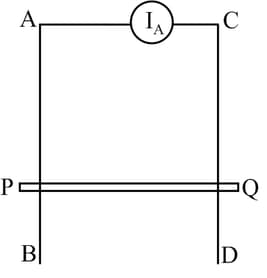Embibe Experts Solutions for Chapter: Magnetic Effect of Electric Current, Exercise 1: Exercise 1
Embibe Experts Physics Solutions for Exercise - Embibe Experts Solutions for Chapter: Magnetic Effect of Electric Current, Exercise 1: Exercise 1
Attempt the practice questions on Chapter 16: Magnetic Effect of Electric Current, Exercise 1: Exercise 1 with hints and solutions to strengthen your understanding. Physics Crash Course MHT-CET solutions are prepared by Experienced Embibe Experts.
Questions from Embibe Experts Solutions for Chapter: Magnetic Effect of Electric Current, Exercise 1: Exercise 1 with Hints & Solutions
An electric motor is used to convert
A wire of length carries current along axis. A magnetic field acts on the wire. The magnitude of magnetic force acting on the wire is
and are fixed conducting smooth rails placed in a vertical plane and joined by a constant current source at its upper end. is a conducting rod which is free to slide on the rails. A horizontal uniform magnetic field exists in space as shown. If the rod is released from rest then,

An ammeter and a milliammeter are converted from identical galvanometers. Which one has smaller resistance?
Sensitivity of a moving coil galvanometer can be increased by:
In an attempt to increases the current sensitivity of a moving coil galvanometer, it is found that its resistance becomes double while the current sensitivity increases by . The voltage sensitivity of the galvanometer changes by
If the number of turns and radius of cross section of the coil of a tangent galvanometer are doubled, then the reduction factor will become
A short bar magnet passes at a steady speed right through a long solenoid. A galvanometer is connected across the solenoid. Which graph best represents the variation of the galvanometer deflection with time

